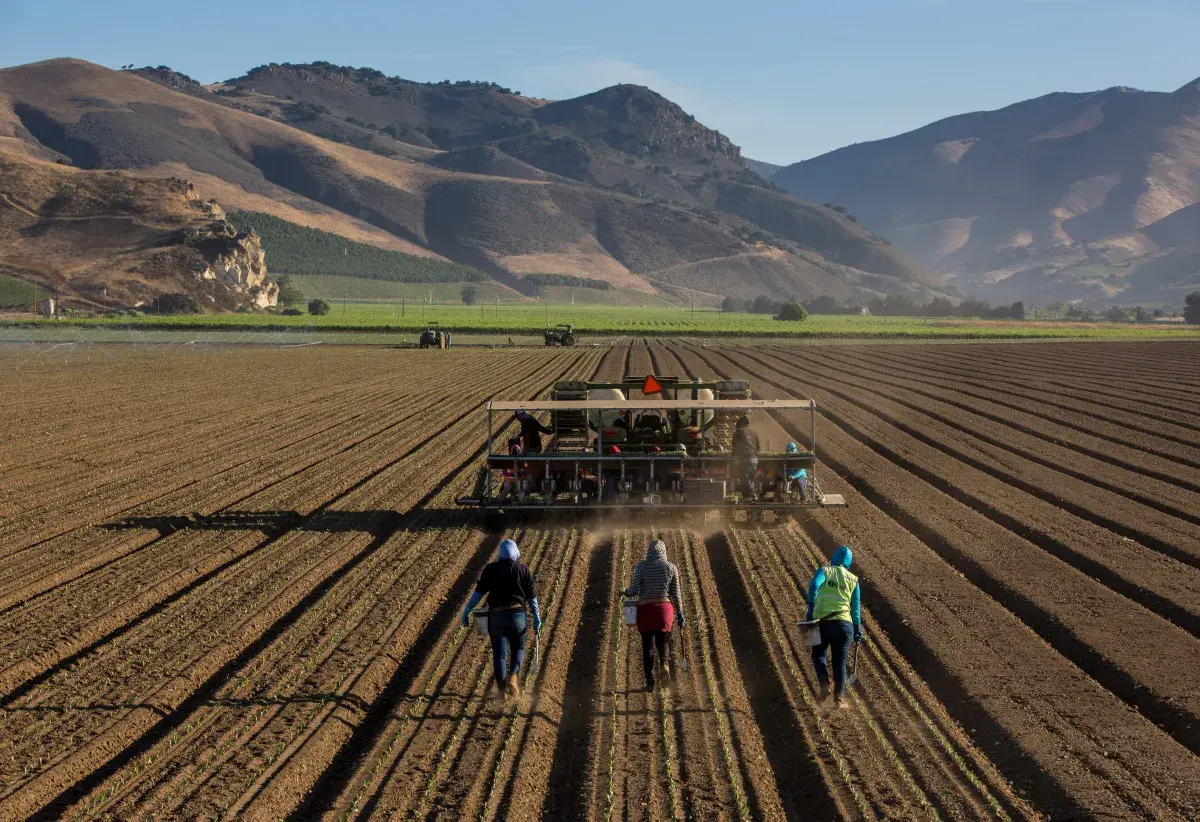
October 12 is National Farmers’ Day in America, and the federal government is shut down, again, with at least 42,000 employees of the Department of Agriculture furloughed. A time usually reserved for thanking farmers for providing safe, affordable, and sustainable food is obscured by political bickering and brinksmanship. All the while, no one is able to move the ball forward on a bailout package that the Trump administration had promised for America’s hurting farmers. And they are hurting.
Farm production expenses have increased by $12 billion compared to last year, as the Trump administration’s trade war slams agricultural inputs, and its deportation approach has made agricultural labor shortages worse. The planned bailout through direct payments is rumored to cost between $10-$15 billion and draw from tariff revenues, and would need approval from an absentee Congress.
The longer farmers wait for payments, the already soaring farm bankruptcies will continue to grow. But President Donald Trump didn’t run for reelection promising dependency and bailouts to farmers, he promised a renaissance in their industry.
Would Trump still be popular in farming counties, 100 of which supported him by 80 percent or more of their vote, if farmers knew what they know now?
Making farmers dependent on bailouts isn’t honoring them or the consumers they serve—it’s bad policy. It is also a discouraging sign of how polarized politics has become.
Rarely does a single profession garner as much sympathy from the general population and support from politicians as farmers, especially considering that only 1.5 percent of the American workforce is involved in the sector, down from 40 percent in the early 1900s, and 80 percent in the 1800s. Look up your family tree, and you’ll find a farmer.
Being so far removed from the realities of farming means that most people, including politicians, don’t retain basic knowledge about the practice of food production.
In a 2016 speech at the University of Oxford’s Saïd Business School, former New York City Mayor Michael Bloomberg told students, “I could teach anybody, even people in this room, to be a farmer. It’s a process. You dig a hole, you put a seed in, you put dirt on top, add water, up comes the corn,” adding that modern work requires more “gray matter.”
And while Michael Bloomberg is fairly unique in his arrogant lack of farming knowledge, the fact that he wasn’t laughed out of the room shows that the general population isn’t aware of what goes into planting corn either.
Before planting seeds, farmers test soil nutrients and adjust the pH, apply fertilizer, and use machinery to plant seeds at the optimal depth. They carefully select seeds for a variety of characteristics, not least of which is climate and soil type. They must manage pests and weeds, time irrigation correctly, and monitor rainfall, before we even get to the multi-technological art of harvesting.
A modern tractor will typically have at least two monitors for autosteering, section control, and machine settings, as well as additional monitors and cameras. Large sprayers or combines will often have an ISOBUS terminal that combines compatible machinery from different manufacturers into a single control panel.
If you’ve never been on a farm and you’re visualizing a tractor right now, what you’re picturing is likely lower-tech than what is actually used today.
Farming is not just digging a hole. Being a farmer means you simultaneously need to read the weather accurately, understand your livestock, fix heavy machinery, apply patience, accept inevitable hardship and losses, all while some in the country regard your profession as requiring less brain power than a desk-job project manager who punches data into a spreadsheet while chugging their third coffee.
As a result, we’ve often gotten bad policies in numerous statehouses. Vermont and New York are in the process of phasing out neonicotinoid insecticides because mounting pressure from ideological environmental groups has drowned out the calls for caution from farmers and agriculture analysts in those states.
On the federal level, Health and Human Services Secretary Robert F. Kennedy Jr. and his MAHA movement peddle equally the narrative that modern chemistry, including the herbicide glyphosate, is the root of all of America’s health woes. This is false, and most farmers know it.
American agriculture has made incredible advances, considering the amount of food America safely produces, despite the adverse conditions farmers often face. Their ingenuity, paired with technological advances, and trade policy rooted in the reality of a global economy makes that possible. The world is grateful, and it’s a shame that the president’s policies express exactly the opposite.
Bill Wirtz is the senior policy analyst at the Consumer Choice Center, where he covers food and agriculture policy.
The views expressed in this article are the writer’s own.